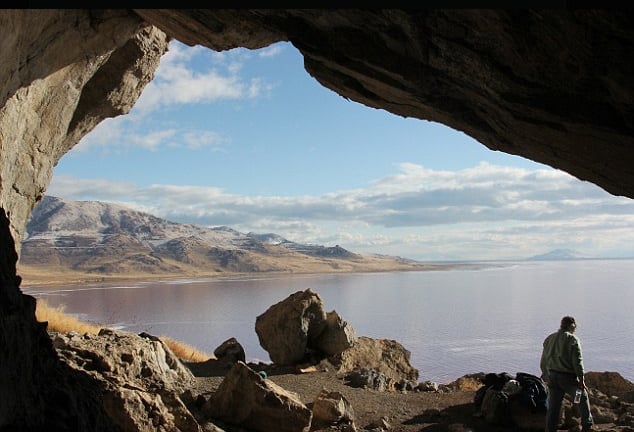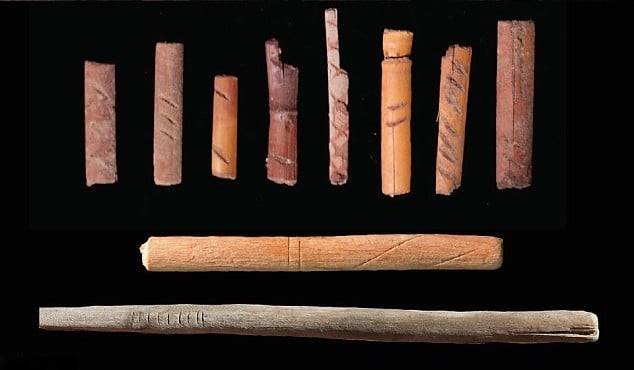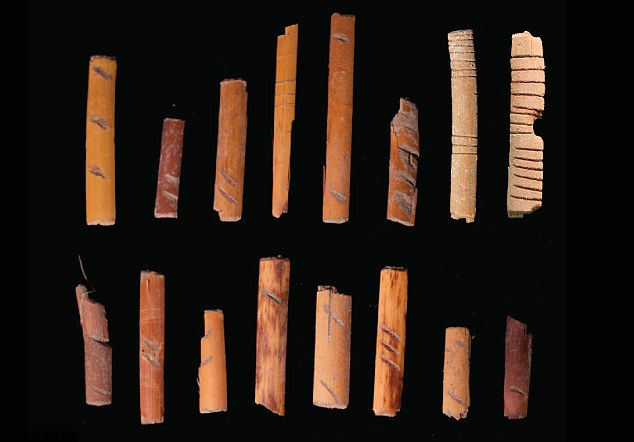People
Newly Discovered 13th-Century Cave Is Apparently America’s First Casino
Utah's early residents appear to have been suckers for a game of chance.

Utah's early residents appear to have been suckers for a game of chance.

Sarah Cascone


Rudimentary dice and caved sticks discovered in the Utah cave.
Photo: John Ives.
Archaeologists suspect that a cave on the shore of Utah’s Great Salt Lake would have served as something of an ancient casino for Native Americans, the Daily Mail reports.
Excavations at the cave have uncovered hundreds of carved sticks and canes believed to be gambling pieces, and archaeologists believe there potentially could be as many as 10,000 objects yet to be found.
It is thought the indigenous residents of the area would have gambled by throwing short sticks, blank on one side and notched with cuts or burns on the other, and would have guessed how many cut marks would fall face side up.
The gaming objects were found near the cave entrance, around what would have been the hearth. Researchers believe that women would have gambled with these notched sticks, with stakes being chore assignments or small personal objects.

The Utah cave.
Photo: John Ives.
“The many cane dice may be telling us about a common, day-to-day activity, breaking up the hard work on hide and meat preparation, sewing, all these things,” John Ives, an archaeologist at the University of Alberta working on the site, told the Daily Mail. Having time to gamble suggests the tribe enjoyed a relatively comfortable lifestyle.
That this gambling mecca would be found in Utah seems somewhat ironic, given the state’s draconian anti-gambling laws, today among the strictest in the nation.

Rudimentary dice discovered in the Utah cave.
Photo: John Ives.
In addition to the gaming pieces, the cave also contains artifacts that appear to have originated in other regions, Archaeology reports, suggesting that the members of the Promontory culture had a robust trade with other tribes, interacting with cultures as far away as British Columbia. The cave is thought to have been inhabited for 20 to 40 years.
The historic gambling hall isn’t the only potential American first to have been discovered in recent months: last month, an archaeological dig in Alaska turned up a 12,300 year-old bone pendant that could be the continent’s earliest known work of art (see What May Be Oldest American Artwork Discovered By Accident in Alaska).
In March, a Utah resident with a drone allegedly found ancient petroglyphs in an undisclosed cave in the area which may date back 2,500 years, according to a local Fox News affiliate. And, this past year, archaeologists also uncovered a 1,300-year-old village in the Petrified Forest National Park in Arizona (see Ancient Village Unearthed in Arizona’s Petrified Forest).’
The location of the Great Salt Lake cave is currently being kept a secret to deter looters.